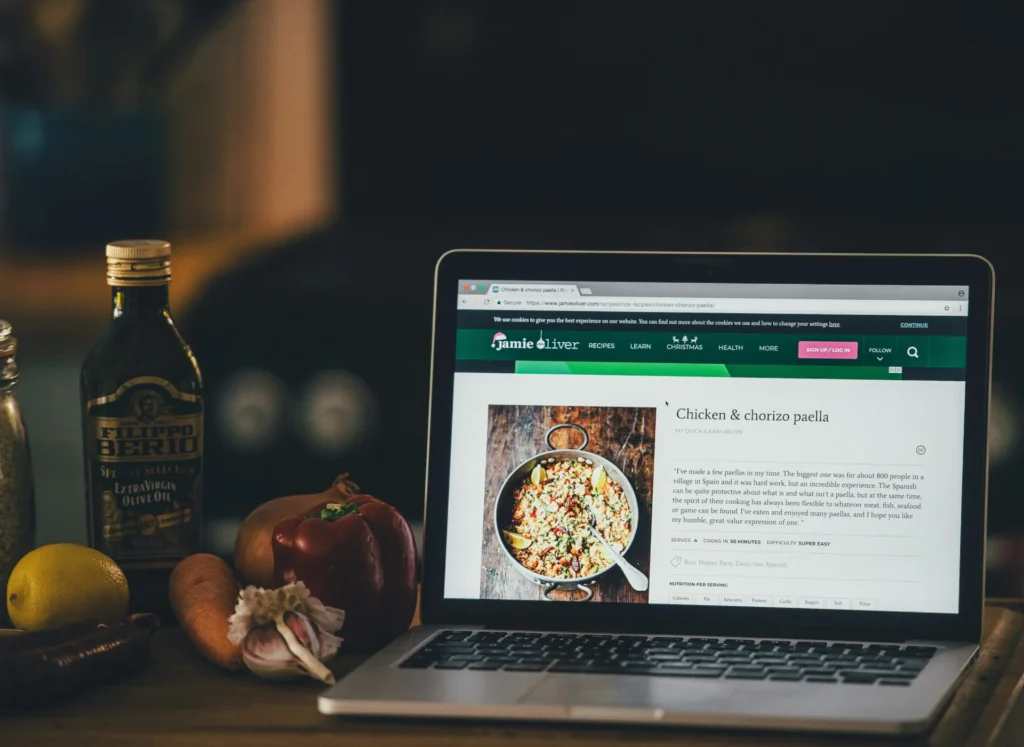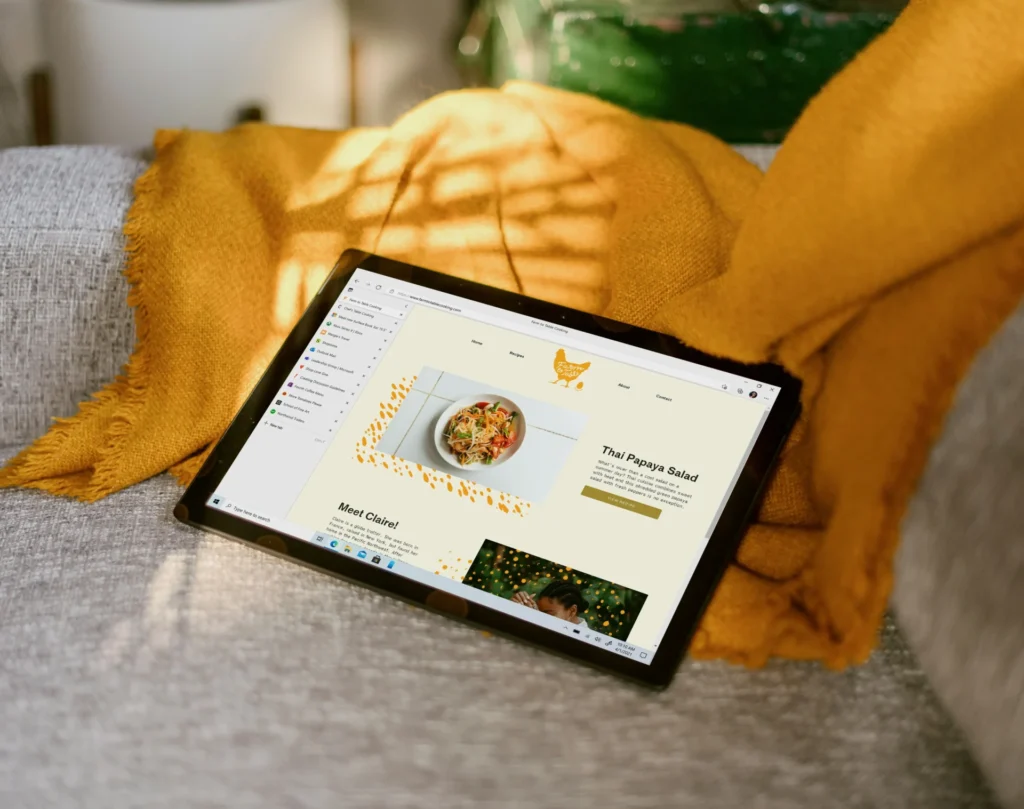The online food market is brimming with opportunities, but standing out requires more than just a great product. Traditional marketing methods are no longer enough. You need a digital marketing strategy that captures attention and drives sales. Understanding how to market a food product online is the key to reaching the right audience and turning them into loyal customers.
From high-quality visuals to compelling storytelling, every detail matters in a crowded marketplace. Additionally, factors like SEO, social media engagement, and paid advertising all play a crucial role in visibility. Mastering these elements will help you build a brand that not only attracts customers but keeps them coming back.
Essential First Steps on How to Market a Food Product Online
Before launching your online food business, it’s essential to build a strong foundation by defining your unique selling proposition (USP). Ask yourself what makes your product special—whether it’s a secret family recipe, locally sourced ingredients, or an innovative spin on a classic dish. Your USP sets you apart from competitors and gives customers a reason to choose you. This step is a crucial part of understanding how to market a food product online, as it helps craft a compelling narrative that highlights your unique value and appeals to your target audience.
Once you’ve defined your USP, the next step is to create a cohesive brand identity that resonates with your customers. This goes beyond just a logo—it’s about reflecting your values and delivering a consistent experience across your website, social media platforms, and other online channels. Equally important is conducting thorough food and beverage market research to analyze competitors’ strategies, pricing, and customer engagement. Understanding where your product fits within the market is key to developing a strategy for how to market a food product online effectively and standing out in a crowded industry.
Finally, develop a robust business plan that outlines your goals, marketing strategy, sales projections, and operational plan. This roadmap keeps you focused and helps you make informed decisions. Be sure to consider the legal and regulatory requirements for food businesses, including labeling, packaging, and food safety regulations, to ensure compliance. A well-thought-out business plan combined with a thorough understanding of the industry will equip you with the tools needed to successfully market your food product online and drive long-term growth.
Identifying Your Ideal Customer and Target Audience
To successfully market your food product online, you need to deeply understand your target audience. Just like you wouldn’t use the same lure to catch different types of fish, you can’t use a one-size-fits-all approach in marketing. The first step in how to market a food product online is to create detailed buyer personas—fictional profiles representing your ideal customers. These personas should include information like age, occupation, interests, and even favorite foods. The more detailed they are, the better you’ll understand your audience’s needs, desires, and pain points.
Once your personas are in place, analyze demographic, psychographic, and behavioral data to refine your strategy. Demographics include factors like age, gender, and income, while psychographics focus on values, interests, and lifestyles. Behavioral data reveals online habits, purchasing patterns, and brand interactions. Utilize tools such as website analytics, social media insights, and customer surveys to gather this information. A key aspect of how to market a food product online is using these insights to create personalized content that resonates with your audience and builds a loyal customer base.
Finally, tailor your marketing strategy to align with your target audience’s online behavior and preferences. Understand where they spend their time, what content they engage with, and which platforms they prefer. By adapting your messaging, visuals, and overall approach to meet their expectations, you’ll create more relevant and effective marketing campaigns. Mastering how to market a food product online involves continuously refining your strategy based on audience insights to foster deeper connections and drive sales.
Choosing Your Online Marketplace
Selecting the right platform is a crucial step in learning how to market a food product online. There are various options available, including dedicated e-commerce platforms and third-party marketplaces. Each has its own advantages and challenges, so careful consideration is essential. Selling through your own website gives you complete control over branding and customer experience. However, it requires investment in website development and marketing. On the other hand, third-party marketplaces like Amazon, Etsy, or eBay provide access to a built-in audience, but they come with fees and limitations.
When choosing an e-commerce platform, consider factors such as ease of use, payment processing options, and scalability. Shopify, WooCommerce, and BigCommerce are popular choices due to their customizable features and integrations. Make sure your platform supports mobile optimization, as a large percentage of online shoppers browse and buy through their smartphones. Additionally, consider integrating secure payment gateways like PayPal or Stripe to provide a seamless checkout experience. The smoother the purchase process, the higher the chances of conversion. Properly categorizing and describing your products with high-quality images can also boost sales.
Optimizing your product listings is another essential aspect of how to market a food product online. Your listings should be informative, engaging, and optimized for search engines. Use relevant keywords in product titles and descriptions to improve visibility. Highlight unique selling points, such as organic ingredients, homemade quality, or dietary benefits. Customer reviews and ratings also play a vital role in building trust. Encourage satisfied customers to leave feedback and showcase testimonials on your product pages. A well-organized and visually appealing store increases customer confidence and encourages repeat business.

Social Media Strategy for Food Marketing
Social media is a powerful tool for food and beverage marketing, allowing businesses to engage directly with their audience. Platforms like Instagram, Facebook, and TikTok provide the perfect space to showcase visually appealing food products. To maximize your reach, tailor your content strategy to each platform’s strengths. Instagram is ideal for high-quality food photography marketing, while TikTok thrives on short, engaging videos. Facebook groups and pages allow for deeper community engagement and discussions. Understanding how to market a food product online effectively means utilizing these platforms strategically.
Consistency is key when building a strong social media presence. Posting regularly and maintaining a cohesive visual style helps build brand recognition. Use a mix of content types, including behind-the-scenes footage, recipe ideas, and customer testimonials. Engage with your audience by responding to comments, hosting giveaways, and running interactive polls. Live sessions and Q&A videos also help build trust and authenticity. By creating a vibrant and interactive community, your brand remains top-of-mind for potential customers.
Paid social media advertising is another essential social media strategy for expanding reach. Facebook and Instagram ads allow for precise audience targeting based on demographics, interests, and behaviors. Influencer collaborations can also be highly effective, as trusted food bloggers and chefs can introduce your products to a wider audience. Running promotions and limited-time discounts encourages impulse purchases. Tracking analytics and engagement metrics ensures that your social media efforts remain effective. A well-executed social media strategy is a key component of how to market a food product online, playing a crucial role in increasing brand awareness and driving sales.
SEO Optimization for Online Discovery
Search engine optimization (SEO) is a fundamental component of digital marketing. Even the best-looking website won’t generate sales if customers can’t find it. Understanding SEO techniques is essential when learning how to market a food product online. The first step is conducting keyword research to identify relevant search terms that potential customers use. Tools like Google Keyword Planner and Ahrefs can help pinpoint high-traffic keywords. Incorporating these keywords naturally into website content, product descriptions, and blog posts improves search rankings.
Optimizing website structure and performance is equally important. A fast-loading, mobile-friendly website enhances user experience and reduces bounce rates. Clear navigation and easy access to product pages improve usability. High-quality images should be optimized for quick loading without compromising quality. Meta descriptions and title tags should include target keywords while remaining engaging and informative. Internal linking between related pages helps search engines understand your site’s structure and improves rankings.
Content marketing plays a significant role in SEO success. Maintaining a blog with valuable food-related articles attracts organic traffic. Writing about industry trends, recipe ideas, and nutritional benefits positions your brand as an authority. Guest posting on reputable websites and securing backlinks further enhances credibility. Local SEO strategies, such as optimizing Google My Business listings, help attract nearby customers. Regularly updating website content and monitoring analytics ensures ongoing SEO success. A strong SEO foundation is essential in how to market a food product online, increasing online visibility and driving consistent traffic.
Paid Promotions and Advertising
While organic marketing strategies are effective, paid promotions provide immediate results. Running targeted advertising campaigns helps reach a broader audience and drive traffic quickly. Platforms like Google Ads and Facebook Ads offer precise targeting options. For instance, running a Google Ads for restaurants campaign can reach specific demographics, interests, and behaviors to maximize return on investment. Understanding how to market a food product online includes leveraging these paid tools effectively. Additionally, using dynamic ads that automatically showcase products based on user preferences can further enhance ad performance. Investing in high-quality ad creatives, such as professional food photography and compelling copy, can significantly impact engagement and conversions.
Retargeting ads are a powerful strategy to convert visitors into customers. Many people browse online stores without making a purchase. For instance, Facebook retargeting ads remind consumers of previously viewed products, increasing conversion rates. Limited-time promotions and discounts create urgency and encourage impulse purchases. A/B testing different ad creatives and copy helps determine which campaigns perform best. Regularly reviewing analytics ensures that advertising budgets are spent efficiently. Utilizing machine learning and AI-driven ad optimizations can further refine audience targeting and boost results. Additionally, running seasonal promotions and leveraging trending food-related hashtags in ads can attract more potential buyers.
Collaborating with influencers and food bloggers amplifies advertising efforts. Sponsored posts and partnerships introduce products to new audiences. Offering affiliate commissions to influencers incentivizes them to promote products effectively. Running giveaways and contests generates excitement and increases brand awareness. Food and drink paid advertising, when combined with organic strategies, plays a crucial role in how to market a food product online. Proper budget allocation and continuous optimization ensure maximum profitability.

Streamlining the Checkout Process
The checkout experience is the final step in the customer journey and plays a vital role in conversion rates. A complex or confusing checkout process can lead to abandoned carts, making it essential for businesses to simplify the process. Reducing unnecessary steps and offering guest checkout options enhance user experience. Customers appreciate a fast and hassle-free purchase journey. Optimizing page load speed during checkout prevents frustration and keeps customers from dropping off. An essential part of how to market a food product online is ensuring that the checkout process is smooth and efficient.
Multiple payment options increase customer satisfaction and improve conversion rates. Credit cards, digital wallets, and installment payment methods cater to different preferences. Transparent pricing and clear shipping details build trust and prevent last-minute drop-offs. Implementing abandoned cart recovery strategies helps recapture lost sales by reminding customers of incomplete purchases. Sending follow-up emails with incentives encourages hesitant buyers to complete their orders. A strong checkout strategy is crucial when learning how to market a food product online successfully.
Security is another crucial factor in checkout optimization, as customers need assurance that their payment information is safe. SSL encryption and secure payment gateways protect customer data and prevent fraud. Displaying trust badges and security certifications reassures buyers that their transactions are protected. Personalized checkout experiences, such as saved payment details, speed up future purchases. Sending order confirmation emails and providing shipment tracking enhances customer satisfaction. A well-optimized checkout process builds trust and encourages repeat purchases.
Wrap Up
Savoring success in the online food market requires more than just a great product—it demands a strategic, well-executed digital marketing plan. From crafting an irresistible brand identity to leveraging SEO, social media, and paid promotions, every step plays a crucial role in building visibility and driving sales. By optimizing your marketplace presence, streamlining the checkout process, and fostering customer loyalty, you create a business that not only attracts new customers but keeps them coming back for more. While success takes time and effort, a thoughtful approach ensures that your food brand flourishes in the competitive online space.
Navigating the complexities of digital marketing can be overwhelming, but you don’t have to do it alone. If you’re looking for expert guidance, fishbat, a premier New York digital marketing company, can help you craft a winning strategy that delivers real results. Whether you need assistance with social media, SEO, or paid advertising, our team has the expertise to elevate your brand. Contact us today at 855-347-4228 or hello@fishbat.com for a free consultation and take the next step toward growing your online food business.


